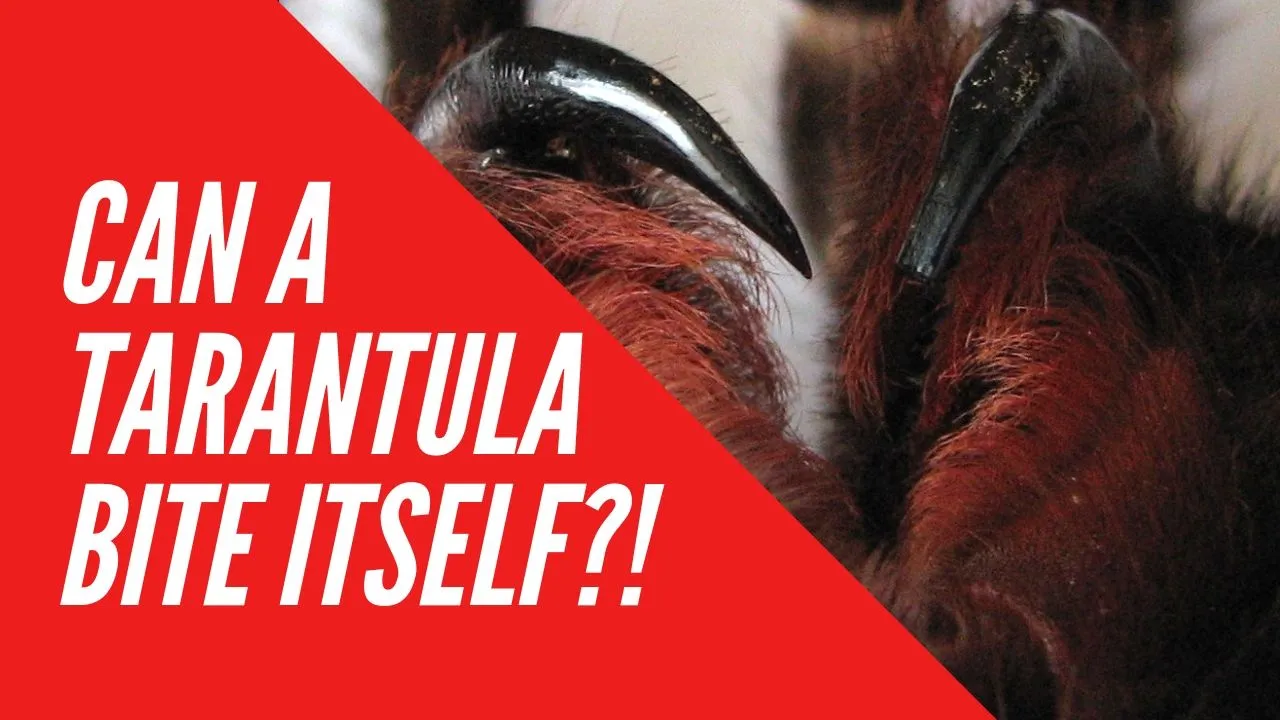Understanding Tarantula Bites
Tarantulas, though often feared, typically possess venom that is not lethal to humans. However, their bites can still be painful and cause various reactions. Understanding what happens when a tarantula bites and knowing how to react promptly is crucial for effective treatment. This guide will provide detailed information on tarantula bite treatment, from immediate first aid to long-term care and preventative measures. It is essential to recognize that the severity of a tarantula bite can vary depending on factors such as the tarantula species, the amount of venom injected, and the individual’s sensitivity to the venom.
Identifying a Tarantula Bite
Identifying a tarantula bite is the first step towards proper treatment. The bite itself may appear as two small puncture wounds, often accompanied by immediate pain. However, the appearance can vary, and some bites may not be immediately noticeable. Recognizing the symptoms that follow is key to confirming a bite and initiating appropriate care. Knowing what to look for allows for quicker and more effective treatment, minimizing discomfort and potential complications.
Recognizing the Symptoms

Common symptoms of a tarantula bite include immediate pain, which may range from mild to intense. Redness, swelling, and itching around the bite area are also typical. Some individuals may experience muscle cramps, localized numbness, or tingling. More severe reactions, although rare, might include nausea, vomiting, difficulty breathing, or an allergic reaction. Monitor the affected person closely for any signs of a severe reaction, and seek immediate medical attention if needed. Understanding the range of possible symptoms can help ensure timely and appropriate medical intervention.
Initial First Aid Steps
Immediate action following a tarantula bite is critical for minimizing the impact of the venom and preventing complications. Quick and proper first aid can reduce pain, swelling, and the risk of infection. The following steps should be taken immediately after a bite to help manage the situation effectively until professional medical assistance can be sought or, if necessary, to stabilize the situation.
Washing the Bite Area
The first step in treating a tarantula bite is to gently wash the affected area with mild soap and water. This helps to remove any venom on the skin’s surface and reduces the risk of infection. Use lukewarm water and avoid harsh scrubbing, as this can irritate the skin further. Pat the area dry with a clean cloth. This simple action is crucial for initial care and helps set the stage for further treatment.
Applying a Cold Compress

Applying a cold compress or ice pack to the bite area can help reduce pain, swelling, and inflammation. Wrap the ice pack in a cloth to prevent direct contact with the skin, and apply it for 10-15 minutes at a time. Repeat this process as needed to alleviate discomfort. Cold therapy is a simple yet effective method for managing the immediate symptoms of a tarantula bite.
Elevating the Affected Limb
If the bite is on a limb, elevate it above the heart level. This helps to reduce swelling and promote blood flow, which can aid in healing. Elevating the limb is particularly helpful in the initial stages of treatment, and can significantly reduce discomfort and the rate of swelling. This simple measure can contribute to a more comfortable recovery.
Seeking Medical Attention
While most tarantula bites are not life-threatening, it’s essential to seek medical attention, especially if the symptoms are severe or worsening. A healthcare professional can assess the bite, provide appropriate treatment, and monitor for any complications. Seeking professional medical advice is a proactive approach to ensure a safe and speedy recovery. It is always better to err on the side of caution when dealing with any bite or sting.
When to Consult a Doctor Immediately

Seek immediate medical attention if you experience severe symptoms such as difficulty breathing, chest pain, dizziness, or a rapid heartbeat. Other concerning signs include widespread swelling, significant changes in skin color, or signs of an allergic reaction. Any symptoms that cause you concern should be evaluated by a healthcare professional without delay. Prompt medical attention is crucial to prevent serious complications and ensure your safety.
Medical Treatments for Tarantula Bites
Depending on the severity of the bite and the symptoms, medical treatments may vary. A doctor might recommend pain relievers to manage discomfort. Additionally, they may prescribe antihistamines to reduce itching and swelling or anti-inflammatory medications to help with the inflammation. In some cases, a tetanus shot might be necessary, especially if the bite has broken the skin. Medical professionals are equipped to offer the most appropriate and effective care.
Pain Management
Pain management is a critical component of treatment. Over-the-counter pain relievers, such as ibuprofen or acetaminophen, can help alleviate mild to moderate pain. For more severe pain, a doctor may prescribe stronger pain medications. Applying a cold compress to the bite area can also help to reduce pain. Your doctor will determine the best approach to ensure your comfort during the healing process.
Antihistamines and Anti-Inflammatories

Antihistamines and anti-inflammatory medications can help reduce itching, swelling, and inflammation associated with the bite. Antihistamines can be particularly effective in combating allergic reactions. Anti-inflammatory drugs help to reduce swelling and discomfort. Always follow the doctor’s instructions when taking any medication, and be aware of any potential side effects.
Preventing Infections
Preventing infection is a vital part of tarantula bite treatment. The puncture wounds from the bite create an entry point for bacteria, which can lead to infection. Therefore, proper wound care and vigilance are crucial. Taking steps to keep the area clean and dry can significantly reduce the risk of infection and ensure a smoother recovery.
Proper Wound Care
Clean the bite area gently with mild soap and water. Avoid harsh scrubbing, which can irritate the skin. Keep the wound clean and dry, and change any bandages regularly. If a bandage is used, make sure it’s sterile and applied correctly. This simple, daily care can help to prevent infection and promote healing. It’s crucial to handle the wound with care.
Signs of Infection to Watch For

Watch for signs of infection, such as increased pain, redness, swelling, pus, or fever. If any of these symptoms appear, seek medical attention immediately. Infections can worsen quickly, and prompt treatment with antibiotics may be necessary. Being vigilant about potential infection can prevent serious complications and ensure you receive timely medical help.
Long-Term Recovery and Care
Following the initial treatment, long-term recovery and care are essential for complete healing and minimizing any lasting effects. This involves managing potential scarring, addressing any persistent itching, and keeping an eye on the bite site for any further complications. Patience and consistent care are key during the recovery period.
Managing Scarring and Itching
Scarring and itching are common during the healing process. Applying a soothing cream or lotion can help alleviate itching. To manage scarring, keep the area moisturized and protect it from the sun. Consult a doctor or dermatologist if you are concerned about scarring or if itching persists or worsens. Proper care and treatment can minimize the appearance of scars and make the recovery process more comfortable.
Follow-up Care and Monitoring

Attend any follow-up appointments recommended by your doctor. Monitor the bite area for any changes, such as increased pain, redness, or swelling. Contact your healthcare provider if you notice any concerning symptoms. Ongoing monitoring ensures that any complications are addressed promptly, and that you get the support needed for a full recovery. Keep your doctor informed of your progress.
Debunking Common Myths About Tarantula Bites
There are many misconceptions about tarantula bites. Understanding the facts can help dispel fears and ensure that you respond to a bite appropriately. Separating fact from fiction is critical for taking the right actions and seeking proper treatment. Being well-informed can eliminate unnecessary anxiety.
Myth 1 Bites are Always Dangerous
One common myth is that all tarantula bites are extremely dangerous. The truth is, most tarantula bites are not life-threatening to humans. The venom is typically mild, and the primary symptoms are localized pain, redness, and swelling. While it’s essential to treat a bite seriously, it’s equally important to understand the level of risk. Most bites cause minor discomfort and resolve with proper care.
Myth 2 All Tarantula Species Pose the Same Threat
Another misconception is that all tarantula species pose the same level of threat. The potency of venom and the severity of the bite can vary between different species. Some tarantula species have more potent venom than others. Moreover, some species may also have urticating hairs, which can cause skin irritation and discomfort. Researching the specific species of tarantula that bit you can help to inform your approach to treatment and care.
Protecting Yourself from Tarantula Bites
The best approach to tarantula bites is prevention. Taking precautions can significantly reduce the risk of being bitten. This includes preventive measures for those who work with or around tarantulas and knowing how to handle these spiders safely. Awareness and safety practices are your best defense against unwanted bites.
Preventive Measures
If you work with tarantulas, wear protective clothing, such as long sleeves and gloves. Avoid handling tarantulas unnecessarily and never provoke them. Be careful when handling or cleaning their enclosures, as they may bite if they feel threatened. Maintain a safe distance and treat them with respect. Preventative measures help to mitigate the risks in situations where there’s a chance of exposure.
Handling Tarantulas Safely
If you must handle a tarantula, do so with caution. Use appropriate tools, such as a long-handled brush, to gently coax the spider into a secure container. Avoid direct contact with your bare hands, and be aware of the tarantula’s behavior. Always keep the tarantula under control and avoid any sudden movements. Handling them safely minimizes the chance of a bite.
In conclusion, tarantula bites, while generally not life-threatening, require prompt and proper treatment to minimize discomfort and prevent complications. By understanding the symptoms, following the recommended first aid steps, and seeking medical attention when necessary, you can ensure a safe and speedy recovery. Furthermore, by debunking common myths and taking preventative measures, you can significantly reduce your risk of being bitten. Prioritize safety, remain informed, and seek professional advice to handle any tarantula bite effectively.
